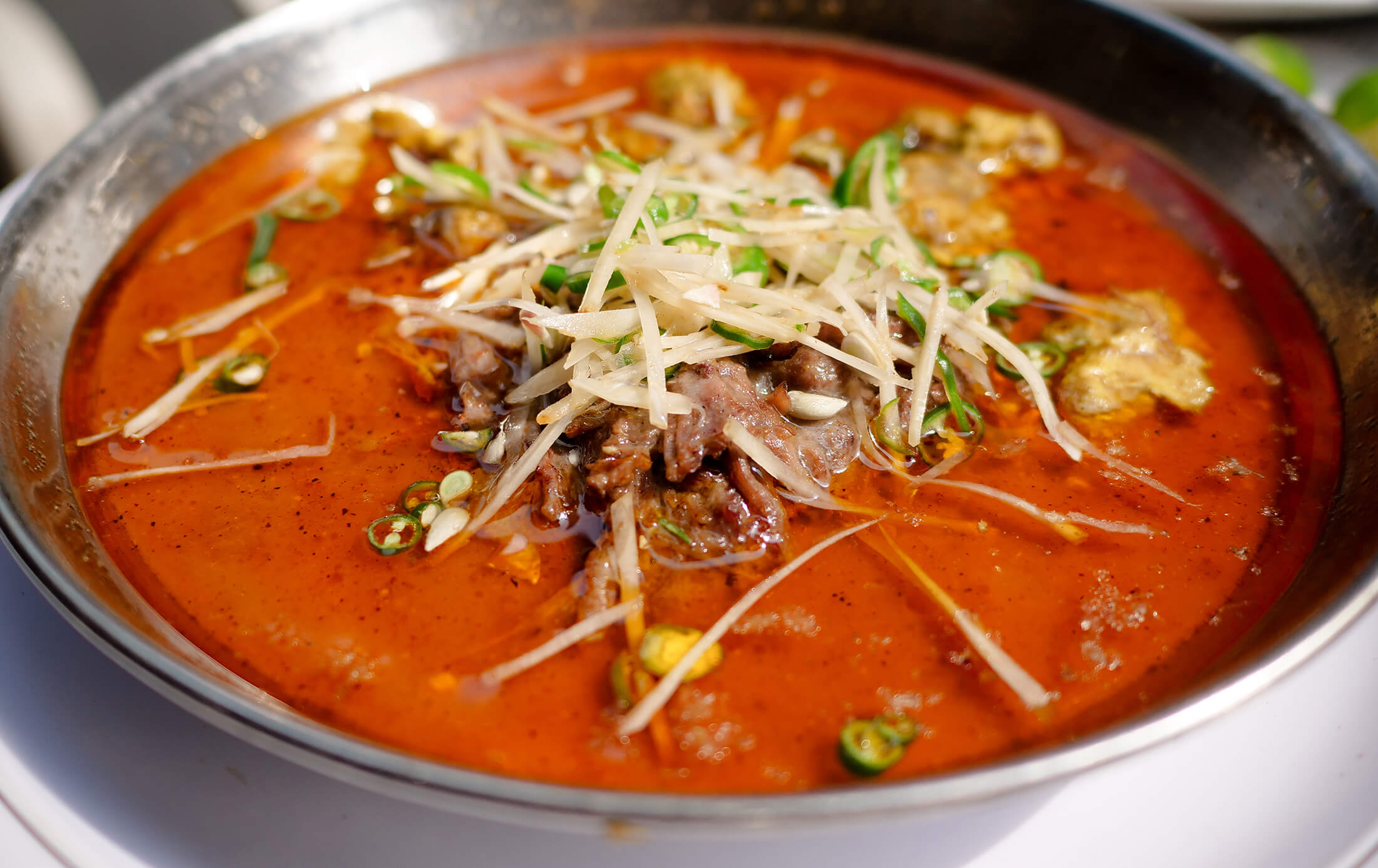Nihari: A Culinary Odyssey Through Time and Tradition
Nihari holds a special place in my culinary preferences, especially during the festivities of Eid al-Adha. This slow-cooked stew, whether prepared with beef or lamb, boasts a tantalizing medley of spices and herbs. It pairs exquisitely with naan or roti, and a garnish of fresh cilantro, zesty lemon juice, and fiery chilies. The meat, tender to the touch, effortlessly parts from the bone, while the broth teases the palate.
Delving into the annals of history, nihari traces its origins back to the 18th-century Mughal Empire. Legend has it that this delectable dish first graced the royal tables of Lucknow, Awadh (now Uttar Pradesh, India), in the twilight years of the Mughal Dynasty. Originally intended as a robust, energy-packed breakfast for the laboring class, especially in colder climes, nihari swiftly ascended to prominence, securing its status as a staple in the opulent feasts of Mughal-era nawabs.
Over time, nihari embarked on a journey across the Indian subcontinent and beyond, finding its way to lands with Muslim communities like Pakistan, Bangladesh, and Afghanistan. Here, it metamorphosed into diverse renditions, adapting to available ingredients and regional tastes. In certain locales, goat replaces beef or lamb, and in others, chicken takes center stage. Some aficionados even incorporate bone marrow or brain to elevate the dish's opulence.
My grandmother, an unparalleled custodian of nihari's art, inherited her culinary wisdom through generations. Armed with a unique blend of spices, painstakingly ground by her hand, including the exotic long pepper (pippali), kin to black pepper, cardamom, cinnamon, cloves, nutmeg, mace, bay leaves, cumin seeds, coriander powder, turmeric powder, red chili powder, salt, and garam masala, she commences her masterpiece. The medley of ginger, garlic, onion, yogurt, and ghee (clarified butter) enriches the pot. Slow-cooking the meat over a low flame, she orchestrates a symphony of tenderness. To finish, she thickens the gravy with wheat flour or gram flour, punctuating the creation with an extra dollop of ghee for a final flourish.
Savoring nihari with a freshly baked paratha or naan, hot from the clay oven, is an indulgence like no other. A drizzle of lemon juice, a sprinkle of chopped ginger, and a dash of chat masala lend a zesty crescendo to the ensemble. The marriage of tastes and textures is sheer ambrosia. Beyond its delectable flavor, nihari boasts a nutritional profile that's nothing short of stellar, offering protein, iron, calcium, zinc, vitamin B12, and an array of essential nutrients vital for well-being.
Now to the fun part
Nihari Vs. Philosophy
More than just a dish, nihari embodies the ethos of Eastern philosophy and culture. It mirrors virtues like forbearance, persistence, magnanimity, and thankfulness, values intrinsic to Eastern traditions. Nihari, a testament to the patience and dedication required in its meticulous preparation, stands as a paragon of generosity and gratitude. It's a dish generously shared with loved ones during special moments and offered to those less fortunate as a gesture of benevolence. For me, nihari serves as a poignant reminder of the sacrifices made by my forebears for their faith and freedom, anchoring me to my heritage and roots.
Nihari Vs. History
Indeed, nihari is not merely a dish; it's a living chronicle of history. It has borne witness to pivotal events and illustrious figures in the Indian subcontinent and beyond. It graced the tables of Mughal emperors who presided over a sprawling empire spanning from Afghanistan to Bengal. British colonial officers, who held sway over India for nearly two centuries, too, relished this culinary masterpiece. Nihari was present during the crucible of the Indian independence movement, which resisted British rule and culminated in the partition of India and Pakistan in 1947. Its evolution also reflects the cultural interplay between India and other nations, including Persia, Turkey, Afghanistan, China, and more."
In every savory spoonful of nihari, there lies a tale of centuries past, a fusion of cultures, and an ode to resilience. This dish, born in the royal kitchens of a bygone era, has transcended time and borders to become a cherished culinary heritage. Its rich history mirrors the very essence of Eastern values—patience, generosity, and gratitude. With each tender morsel, I am not just savoring a dish, but embracing a legacy. Nihari reminds us that some flavors are timeless, and some stories are meant to be tasted, shared, and treasured for generations to come.
Peace Out

Comments
Post a Comment